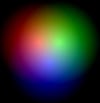OK, this is probably the wrong place for this question, but here goes nothing...
I want to know what math is involved in making a Color gradient (so i can program some myself). My goal for now is to make a program that can get two locations and matching colors, and display a gradient that was formed by them, but i hope to be able to handle more than two color location sets.
all I really want is links to places that have details on the math, or the algorithms, but an explanation here would be good also, if this is the wrong thread please point me to the right one, i googled some of this and it didn't work out.
thanks
